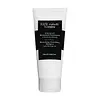What's inside
What's inside
 Key Ingredients
Key Ingredients

No key ingredients
 Benefits
Benefits

No benefits
 Concerns
Concerns

 Ingredients Side-by-side
Ingredients Side-by-side

Water
Skin ConditioningSodium Lauroyl Sarcosinate
CleansingCocamidopropyl Betaine
CleansingLauryl Glucoside
CleansingGlycerin
HumectantPEG-120 Methyl Glucose Trioleate
CleansingPentylene Glycol
Skin ConditioningBetaine
HumectantSodium Cocoyl Glutamate
CleansingParfum
MaskingPropanediol
SolventPanthenol
Skin ConditioningBisabolol
MaskingButyrospermum Parkii Butter
Skin ConditioningCocos Nucifera Oil
MaskingLimnanthes Alba Seed Oil
Skin ConditioningMacadamia Integrifolia Seed Oil
Skin ConditioningMoringa Oleifera Seed Oil
EmollientPyridoxine Hcl
Skin ConditioningSaccharide Isomerate
HumectantTocopheryl Acetate
AntioxidantMagnesium Aspartate
Skin ConditioningZinc Gluconate
Skin ConditioningHydrolyzed Cottonseed Protein
Skin ConditioningPalmitoyl Myristyl Serinate
Skin ConditioningCopper Gluconate
Skin ConditioningGlycol Cetearate
EmollientCitric Acid
BufferingGuar Hydroxypropyltrimonium Chloride
Skin ConditioningPEG-8
HumectantPolyquaternium-10
Polyquaternium-47
Skin ConditioningCellulose
AbsorbentCellulose Gum
Emulsion StabilisingTrisodium Phosphate
BufferingPEG-8/Smdi Copolymer
Tetrasodium EDTA
Sodium Polyacrylate
AbsorbentSodium Citrate
BufferingDisodium EDTA
Biotin
AntiseborrhoeicSodium Benzoate
MaskingPhenoxyethanol
PreservativeBenzoic Acid
MaskingPotassium Sorbate
PreservativeLimonene
PerfumingCitral
PerfumingWater, Sodium Lauroyl Sarcosinate, Cocamidopropyl Betaine, Lauryl Glucoside, Glycerin, PEG-120 Methyl Glucose Trioleate, Pentylene Glycol, Betaine, Sodium Cocoyl Glutamate, Parfum, Propanediol, Panthenol, Bisabolol, Butyrospermum Parkii Butter, Cocos Nucifera Oil, Limnanthes Alba Seed Oil, Macadamia Integrifolia Seed Oil, Moringa Oleifera Seed Oil, Pyridoxine Hcl, Saccharide Isomerate, Tocopheryl Acetate, Magnesium Aspartate, Zinc Gluconate, Hydrolyzed Cottonseed Protein, Palmitoyl Myristyl Serinate, Copper Gluconate, Glycol Cetearate, Citric Acid, Guar Hydroxypropyltrimonium Chloride, PEG-8, Polyquaternium-10, Polyquaternium-47, Cellulose, Cellulose Gum, Trisodium Phosphate, PEG-8/Smdi Copolymer, Tetrasodium EDTA, Sodium Polyacrylate, Sodium Citrate, Disodium EDTA, Biotin, Sodium Benzoate, Phenoxyethanol, Benzoic Acid, Potassium Sorbate, Limonene, Citral
Zinc Pyrithione 1%
AntiseborrhoeicWater
Skin ConditioningSodium Lauryl Sulfate
CleansingSodium Laureth Sulfate
CleansingGlycol Distearate
EmollientZinc Carbonate
Sodium Chloride
MaskingSodium Xylenesulfonate
Cocamidopropyl Betaine
CleansingParfum
MaskingDimethicone
EmollientSodium Benzoate
MaskingGuar Hydroxypropyltrimonium Chloride
Skin ConditioningMagnesium Carbonate Hydroxide
BufferingMethylchloroisothiazolinone
PreservativeMethylisothiazolinone
PreservativeBlue 1 Lake
Cosmetic ColorantCI 17200
Cosmetic ColorantZinc Pyrithione 1%, Water, Sodium Lauryl Sulfate, Sodium Laureth Sulfate, Glycol Distearate, Zinc Carbonate, Sodium Chloride, Sodium Xylenesulfonate, Cocamidopropyl Betaine, Parfum, Dimethicone, Sodium Benzoate, Guar Hydroxypropyltrimonium Chloride, Magnesium Carbonate Hydroxide, Methylchloroisothiazolinone, Methylisothiazolinone, Blue 1 Lake, CI 17200
 Reviews
Reviews

Ingredients Explained
These ingredients are found in both products.
Ingredients higher up in an ingredient list are typically present in a larger amount.
Cocamidopropyl Betaine is a fatty acid created by mixing similar compounds in coconut oil and dimethylaminopropylamine, a compound with two amino groups.
This ingredient is a surfactant and cleanser. It helps gather the dirt, pollutants, and other impurities in your skin to be washed away. It also helps thicken a product and make the texture more creamy.
Being created from coconut oil means Cocamidopropyl Betaine is hydrating for the skin.
While Cocamidopropyl Betaine was believed to be an allergen, a study from 2012 disproved this. It found two compounds in unpure Cocamidopropyl Betaine to be the irritants: aminoamide and 3-dimethylaminopropylamine. High-grade and pure Cocamidopropyl Betaine did not induce allergic reactions during this study.
Learn more about Cocamidopropyl BetaineThis ingredient is derived from guar gum.
It is a conditioning ingredient, meaning it helps soften skin and hair.
Parfum is a catch-all term for an ingredient or more that is used to give a scent to products.
Also called "fragrance", this ingredient can be a blend of hundreds of chemicals or plant oils. This means every product with "fragrance" or "parfum" in the ingredients list is a different mixture.
For instance, Habanolide is a proprietary trade name for a specific aroma chemical. When used as a fragrance ingredient in cosmetics, most aroma chemicals fall under the broad labeling category of “FRAGRANCE” or “PARFUM” according to EU and US regulations.
The term 'parfum' or 'fragrance' is not regulated in many countries. In many cases, it is up to the brand to define this term.
For instance, many brands choose to label themselves as "fragrance-free" because they are not using synthetic fragrances. However, their products may still contain ingredients such as essential oils that are considered a fragrance by INCI standards.
One example is Calendula flower extract. Calendula is an essential oil that still imparts a scent or 'fragrance'.
Depending on the blend, the ingredients in the mixture can cause allergies and sensitivities on the skin. Some ingredients that are known EU allergens include linalool and citronellol.
Parfum can also be used to mask or cover an unpleasant scent.
The bottom line is: not all fragrances/parfum/ingredients are created equally. If you are worried about fragrances, we recommend taking a closer look at an ingredient. And of course, we always recommend speaking with a professional.
Learn more about ParfumSodium Benzoate is a preservative. It's used in both cosmetic and food products to inhibit the growth of mold and bacteria. It is typically produced synthetically.
Both the US FDA and EU Health Committee have approved the use of sodium benzoate. In the US, levels of 0.1% (of the total product) are allowed.
Sodium benzoate works as a preservative by inhibiting the growth of bacteria inside of cells. It prevents the cell from fermenting a type of sugar using an enzyme called phosphofructokinase.
It is the salt of benzoic acid. Foods containing sodium benzoate include soda, salad dressings, condiments, fruit juices, wines, and snack foods.
Studies for using ascorbic acid and sodium benzoate in cosmetics are lacking, especially in skincare routines with multiple steps.
We always recommend speaking with a professional, such as a dermatologist, if you have any concerns.
Learn more about Sodium BenzoateWater. It's the most common cosmetic ingredient of all. You'll usually see it at the top of ingredient lists, meaning that it makes up the largest part of the product.
So why is it so popular? Water most often acts as a solvent - this means that it helps dissolve other ingredients into the formulation.
You'll also recognize water as that liquid we all need to stay alive. If you see this, drink a glass of water. Stay hydrated!
Learn more about Water